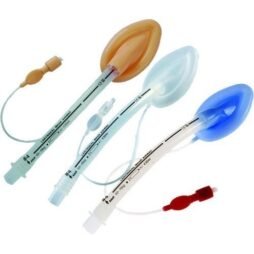Introduction to 3 Ball Spirometers
A 3 ball spirometer is a medical device commonly used in respiratory therapy to assess and improve lung function. This apparatus is designed to aid individuals in enhancing their breathing capabilities by providing visual feedback during inhalation exercises. The spirometer comprises three chambers, each containing a ball. These balls are color-coded and calibrated to rise within their respective chambers in response to the user’s inhalation effort. The primary aim of the 3 ball spirometer is to encourage deep, controlled breathing, which is essential for maintaining optimal lung health.
Structurally, a 3 ball spirometer is relatively straightforward. It consists of a mouthpiece connected to a base unit where the chambers are housed. When the user inhales through the mouthpiece, the air pressure causes the balls to ascend within the chambers. The height to which each ball rises indicates the strength and capacity of the user’s inhalation. This visual representation enables users to monitor their progress and set achievable respiratory goals, making the device both practical and motivational.
The utility of a 3 ball spirometer extends beyond simple lung function assessment. It is frequently prescribed by healthcare professionals for patients recovering from surgery, those with chronic respiratory conditions, or individuals needing to enhance their pulmonary health. Regular use of the spirometer can help prevent postoperative complications such as atelectasis, a condition characterized by collapsed lung tissue. Additionally, it can play a crucial role in managing chronic obstructive pulmonary disease (COPD) by helping patients maintain their lung capacity and improve their overall breathing efficiency.
In summary, the 3 ball spirometer serves as an invaluable tool in respiratory therapy. By providing a clear, quantifiable method for patients to engage in breathing exercises, it promotes lung health and aids in the recovery and management of various respiratory conditions. The simplicity and effectiveness of its design make it an accessible option for a wide range of users, setting the foundation for further understanding of its benefits and applications in subsequent sections.
How 3 Ball Spirometers Work
3 ball spirometers are simple yet effective devices used to measure and improve lung capacity and respiratory health. The fundamental principle behind their operation lies in visual feedback provided by the movement of three lightweight plastic balls within transparent chambers. Each of these chambers is designed to represent different levels of inhalation effort, typically calibrated to specific volumes of air.
When a user inhales through the mouthpiece attached to the spirometer, the airflow generated causes the balls to rise. The first ball, often the lightest, indicates a basic level of lung function. The second and third balls, being progressively heavier, require stronger inhalation efforts, representing moderate and advanced levels of lung capacity, respectively. The ability to elevate these balls serves as a quantifiable measure of the user’s respiratory efficiency and lung strength.
The materials used in the construction of 3 ball spirometers are typically lightweight and durable plastics. This ensures ease of use and portability while maintaining the device’s structural integrity. The transparent chambers allow users and healthcare providers to easily observe the balls’ movement, providing immediate visual feedback. The mouthpiece and tubing are usually made of medical-grade materials to ensure hygiene and safety during use.
Design variations in 3 ball spirometers can include differences in the calibration of the balls to accommodate various age groups and health conditions. Some models may feature adjustable resistance settings or additional indicators to further enhance their utility. However, the core functionality remains consistent across different designs, emphasizing simplicity and effectiveness in promoting respiratory health.
Health Benefits of Using 3 Ball Spirometers
The utilization of 3 ball spirometers offers numerous health benefits, particularly concerning respiratory health and overall lung function. One of the primary advantages of regular use is the improvement in lung capacity. This device, designed to measure and encourage deep breathing, helps individuals expand their lung volume by promoting full inhalations. Consequently, this leads to better oxygenation of the blood and more efficient respiratory function.
Moreover, 3 ball spirometers play a critical role in strengthening respiratory muscles. The act of repeatedly inhaling to elevate the balls in the spirometer works the diaphragm and intercostal muscles, which are essential for effective breathing. Over time, this exercise enhances the endurance and strength of these muscles, making breathing easier and more efficient, especially beneficial for individuals with chronic respiratory conditions.
Another significant health benefit is the prevention of lung complications such as atelectasis, which is the collapse of part or all of a lung. Atelectasis can occur when the air sacs (alveoli) within the lung become deflated. Using a 3 ball spirometer encourages deep breathing and coughing, which helps to keep the airways clear and the alveoli inflated, thereby reducing the risk of this condition.
Additionally, 3 ball spirometers are invaluable in post-operative care and rehabilitation. Post-surgery, patients are often at risk of developing respiratory complications due to prolonged immobility and the effects of anesthesia. Regular use of a spirometer aids in lung re-expansion and helps clear secretions, reducing the likelihood of post-operative pneumonia and other complications. Rehabilitation programs frequently incorporate spirometers to assist patients in regaining optimal lung function and respiratory health.
In essence, incorporating the use of a 3 ball spirometer into a regular health routine not only enhances lung capacity and respiratory muscle strength but also serves as a preventive measure against lung complications and supports recovery in post-operative scenarios.
Who Should Use a 3 Ball Spirometer?
The 3 ball spirometer is a vital tool for a diverse group of individuals, each with unique respiratory needs. One of the primary users are patients recovering from surgery, particularly those who have undergone procedures involving the chest or abdomen. Post-surgical patients often experience shallow breathing due to pain or discomfort, which can lead to complications such as pneumonia. By using a 3 ball spirometer, these patients are encouraged to take deep breaths, thereby promoting lung expansion and improving oxygenation.
Individuals with chronic respiratory conditions, such as Chronic Obstructive Pulmonary Disease (COPD) or asthma, also greatly benefit from regular use of a 3 ball spirometer. For these patients, the device helps monitor and enhance lung function, providing a non-invasive method to track breathing capacity and maintain respiratory health. The spirometer functions as both a diagnostic and therapeutic tool, aiding in the management and treatment of these chronic conditions.
Athletes, particularly those engaged in endurance sports, find the 3 ball spirometer beneficial for enhancing their lung capacity and overall performance. By incorporating spirometer exercises into their training routines, athletes can improve their respiratory efficiency, leading to better oxygen intake and stamina during physical activities. This proactive approach to respiratory health can provide a competitive edge in various sports.
Preventive usage of the 3 ball spirometer is also recommended for certain populations, such as the elderly and smokers. As aging can naturally lead to a decline in lung function, regular spirometer exercises can help maintain respiratory health and reduce the risk of respiratory illnesses. Smokers, on the other hand, are at a higher risk for developing chronic respiratory conditions. Using a 3 ball spirometer can serve as a preventive measure, promoting lung health and potentially mitigating some of the adverse effects of smoking.
In summary, the 3 ball spirometer is a versatile device that serves a wide range of users, from post-surgical patients and individuals with chronic respiratory conditions to athletes and those seeking preventive respiratory care. Its ability to promote lung health and improve breathing efficiency makes it an invaluable tool in various healthcare and fitness settings.
Step-by-Step Guide on Using a 3 Ball Spirometer
Using a 3 ball spirometer effectively requires understanding the correct procedures and techniques. To start, ensure that the spirometer is clean and assembled correctly. The device typically consists of a mouthpiece, a tube, and a chamber with three balls of different colors and weights. Begin by sitting in an upright position, as this promotes optimal lung expansion. Hold the spirometer at eye level to easily monitor the movement of the balls.
Place the mouthpiece in your mouth, sealing your lips tightly around it to prevent air leakage. Take a deep breath in, exhaling fully before beginning the exercise. Once ready, inhale slowly and deeply through the mouthpiece. The goal is to lift the balls in the chamber, starting with the lightest one. As you inhale, focus on raising each ball to the top, one after the other. This controlled inhalation helps in maximizing lung capacity.
Maintain the raised position of the balls for a few seconds before gently exhaling. Repeat this process several times as recommended by your healthcare provider. It’s crucial to practice slow, deep breaths rather than short, rapid ones, as the latter can lead to inaccurate readings and insufficient lung exercise.
One common mistake to avoid is exhaling into the spirometer, which can cause the balls to drop prematurely and disrupt the exercise. Additionally, ensure that you do not blow too forcefully, as this can lead to hyperventilation or dizziness. Consistent practice will aid in better lung function and more precise results.
Interpreting the results involves observing the number of balls elevated and the duration they remain lifted. Successfully raising all three balls indicates good lung capacity and strength. If you struggle to lift more than one ball, it may signal a need for increased respiratory exercises or medical evaluation. Regular use of the 3 ball spirometer can contribute to improved respiratory health, especially post-surgery or during rehabilitation from respiratory illnesses.
“`html
Maintenance and Care for Your 3 Ball Spirometer
Proper maintenance and care of your 3 ball spirometer are crucial for ensuring its longevity and reliable performance. Regular cleaning, appropriate storage, and timely replacement of parts are essential steps to keep your spirometer in optimal condition. This not only ensures accurate readings but also helps prevent infections, particularly in clinical settings.
Firstly, it is imperative to clean your 3 ball spirometer after each use. Disassemble the device according to the manufacturer’s instructions, separating the mouthpiece, tubing, and the unit containing the balls. Clean each component with warm, soapy water, ensuring all residual saliva and debris are removed. Rinse thoroughly with clean water to eliminate any soap residue. Allow the parts to air dry completely before reassembling the spirometer to prevent the growth of mold and bacteria.
For a more thorough disinfection, especially in shared environments, consider using a mild disinfectant solution. Avoid using harsh chemicals that could damage the device. Consult the manufacturer’s guidelines to ensure compatibility with disinfectants. After disinfection, rinse all parts with sterile water and allow them to dry completely before reassembly.
Storage of your 3 ball spirometer is equally important. Store the spirometer in a clean, dry place, preferably in a protective case to prevent dust accumulation and physical damage. Avoid exposing the device to extreme temperatures or humidity, as these conditions can adversely affect its performance and durability.
Regular inspection of your spirometer is crucial. Check for wear and tear, such as cracks or deformities in the plastic components, and ensure the balls move freely within the chambers. Replace any damaged or worn-out parts immediately to maintain the device’s accuracy and hygiene. Most manufacturers provide replacement parts, so refer to the user manual or contact customer support for assistance.
By adhering to these maintenance and care guidelines, you can ensure your 3 ball spirometer remains a reliable tool for respiratory exercises and assessments. Proper hygiene practices not only enhance the device’s lifespan but also safeguard users against potential infections, making regular maintenance an indispensable aspect of spirometer care.
“`
Common Issues and Troubleshooting
When using a 3 ball spirometer, users may encounter several common issues that can affect the device’s performance and accuracy. Understanding these problems and knowing how to troubleshoot them can ensure optimal usage and reliable results.
One frequent issue is encountering stuck balls within the spirometer. This can occur due to accumulated moisture or foreign particles within the device. To address this, users should ensure they regularly clean the spirometer according to the manufacturer’s instructions. Disassembling the device and gently cleaning the interior components with mild soap and water can help prevent the balls from sticking. Allow the spirometer to air dry completely before reassembly and use.
Difficulty in inhaling through the spirometer is another common challenge. This problem can stem from improper technique or respiratory conditions that limit lung capacity. Users should ensure they are using the spirometer correctly by sitting upright, sealing their lips tightly around the mouthpiece, and inhaling slowly and deeply. If difficulties persist despite correct usage, it may be beneficial to consult a healthcare professional to rule out underlying respiratory issues.
Inaccurate readings can also be a concern when using a 3 ball spirometer. These inaccuracies are often the result of inconsistent inhalation effort or an improperly calibrated device. To achieve accurate results, users should perform multiple attempts and average the readings for consistency. Additionally, regular calibration of the spirometer, as recommended by the manufacturer, is crucial for maintaining accuracy. If the device continues to provide inconsistent readings despite proper calibration and technique, seeking professional assistance for recalibration or device inspection may be necessary.
While many issues with a 3 ball spirometer can be resolved through proper maintenance and technique, there are instances where professional help is warranted. Persistent problems, especially those affecting the device’s functionality or the user’s ability to perform the exercise, should be addressed by a healthcare provider or the device’s manufacturer. By acknowledging and troubleshooting these common issues, users can effectively utilize their 3 ball spirometer to monitor and improve their respiratory health.
Success Stories and Expert Opinions
The transformative impact of the 3 ball spirometer is evident in numerous success stories from users who have significantly improved their respiratory health. One such story is that of Jane, a 45-year-old asthma patient. After incorporating the 3 ball spirometer into her daily routine, Jane experienced a remarkable improvement in her lung capacity and overall breathing efficiency. Her doctor noted a 20% increase in her pulmonary function tests within six months, attributing much of this progress to the consistent use of the spirometer.
Similarly, Michael, a 60-year-old recovering from a severe bout of pneumonia, found the 3 ball spirometer instrumental in his rehabilitation. His respiratory therapist recommended the device to help rebuild his lung strength. Michael diligently used the spirometer multiple times a day, which resulted in a noticeable reduction in his symptoms and a quicker return to his regular activities.
Experts in the field of respiratory therapy also advocate for the use of the 3 ball spirometer. Dr. Sarah Thompson, a renowned pulmonologist, emphasizes the device’s role in preventive and rehabilitative care. “The 3 ball spirometer is an excellent tool for patients with chronic respiratory conditions or those recovering from surgery. It encourages deep breathing, which helps to maintain healthy lung function and prevent complications such as atelectasis,” she explains.
Respiratory therapists like John Rodriguez appreciate the simplicity and effectiveness of the device. “The visual feedback provided by the three balls motivates patients to improve their performance progressively. It’s a straightforward yet powerful way to enhance lung capacity and ensure adequate ventilation,” he notes. Rodriguez also highlights the spirometer’s value in patient education, as it helps individuals understand the importance of regular pulmonary exercises.
The collective experiences of users and endorsements from medical professionals underscore the 3 ball spirometer’s efficacy. Whether for chronic respiratory conditions, post-surgical recovery, or general lung health maintenance, this device proves to be a valuable addition to respiratory therapy routines.






